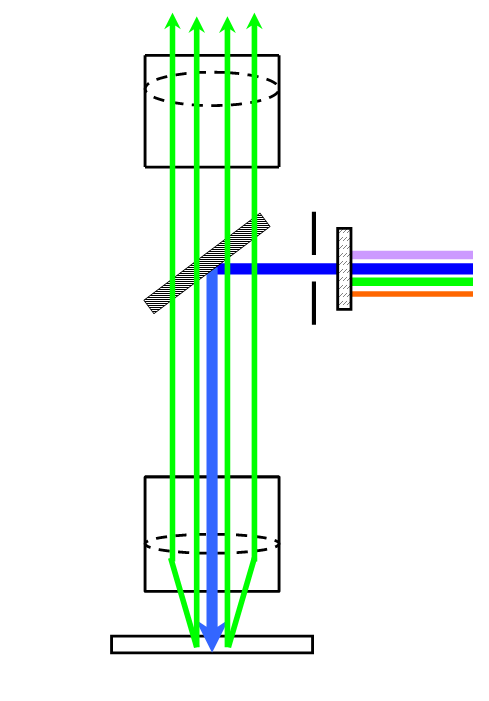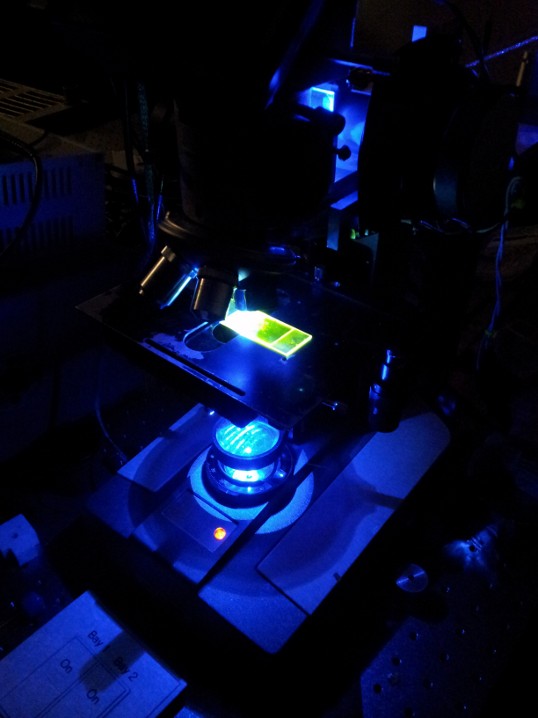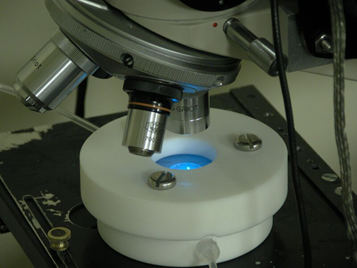
Based on epifluorescence microscopy
FPR = FRAP
The three steps of FPR are: 1) measure fluorescence in a small region; 2) photobleach that region; and, 3) observe the return of fluorescence to reveal details of chemical recovery and, most importantly, molecular diffusion, which can be linked to polymer mass.

